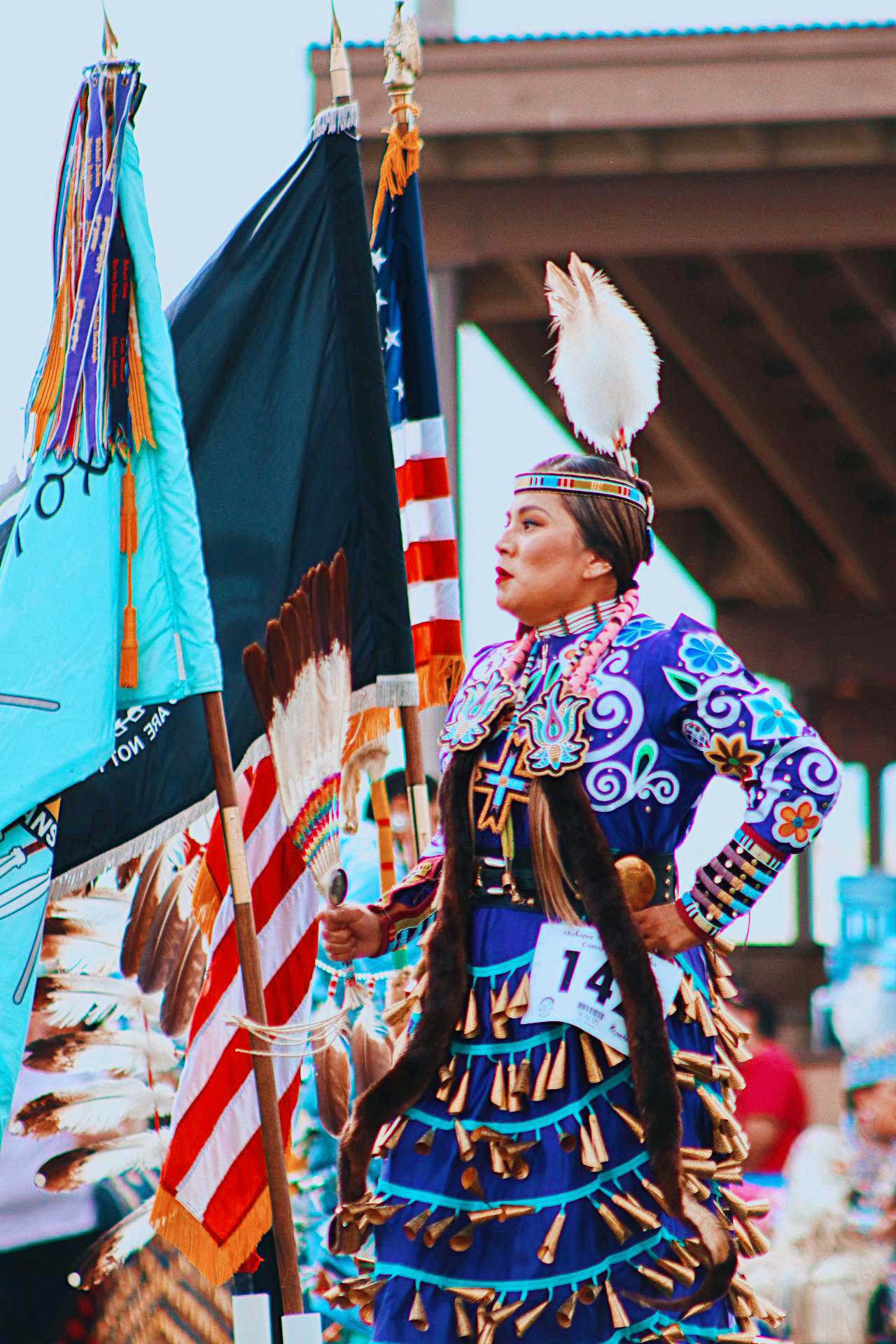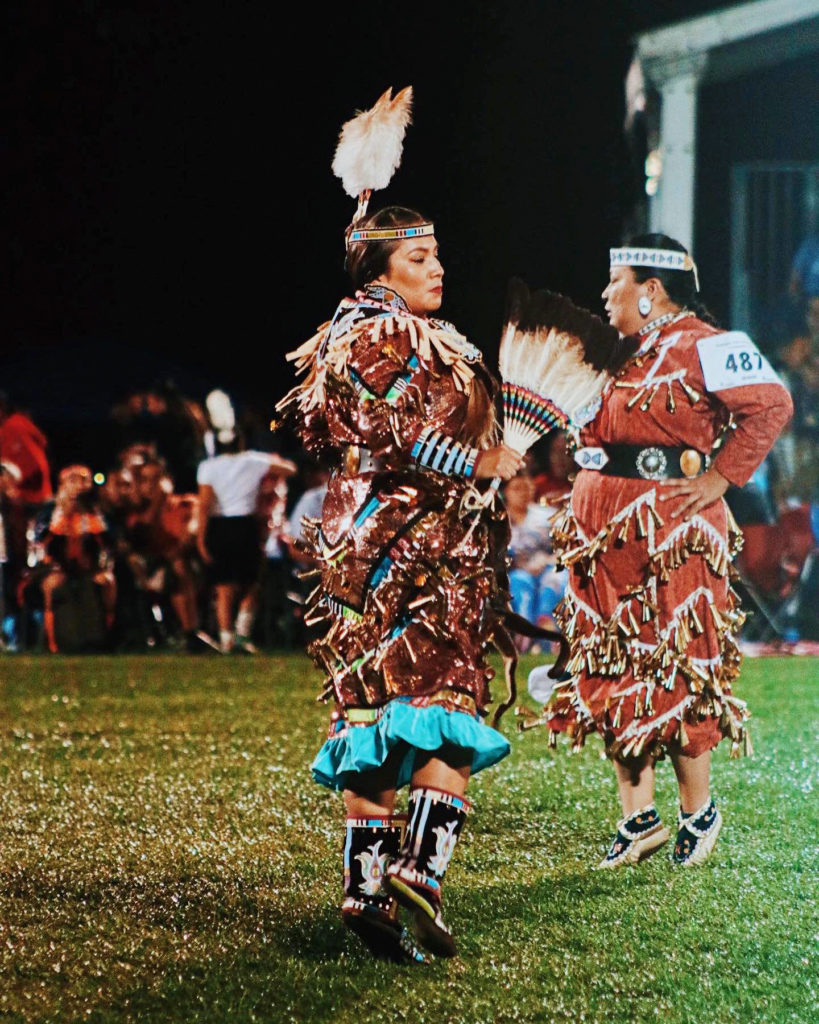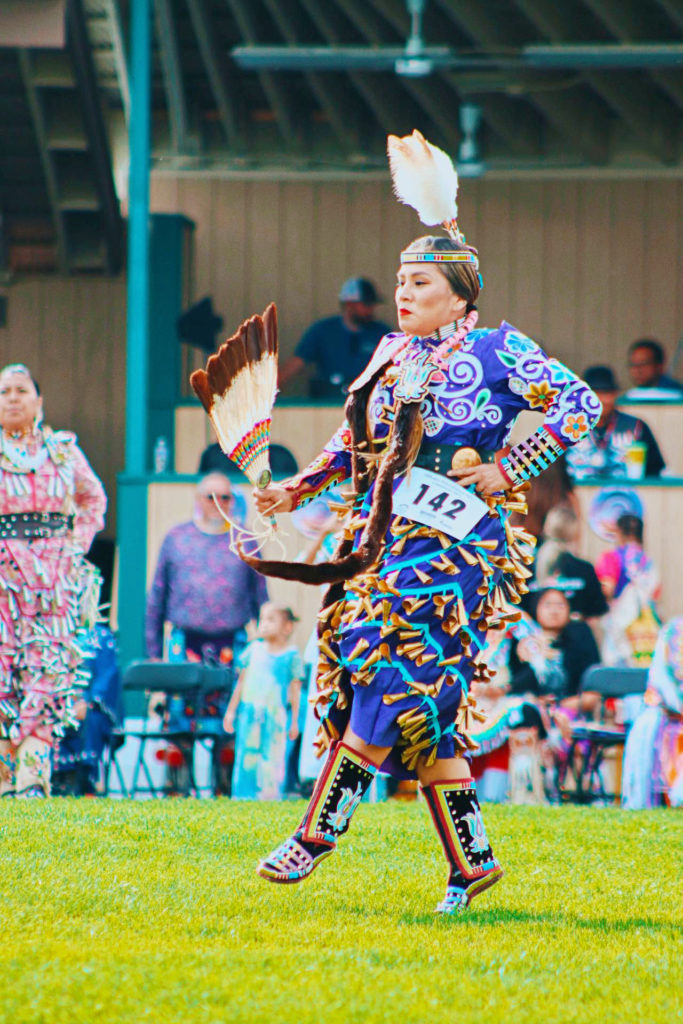
Native American dancer Kendorina (“Kendra”) Redhouse was introduced to powwow dancing when she was just 3 years old. “My mom took me to a powwow, and I started mimicking the other dancers,” Redhouse says. “There is a portion of the celebrations in which intertribal dancing is introduced, and everyone is allowed to participate in the dancing whether they are competing or not. That was my time to shine.” After the powwow finished, she would return home, practice what she learned, and expand on it by thinking of new footwork. Redhouse’s mother immediately recognized her passion for dancing and her naturalness for the artform, including her ability to match the beat. “My mom was there to help coach and guide me despite not having previous dance experience herself.” According to Redhouse, that is how Native American dances are primarily learned—through powwows and personal practice.
Redhouse began with women’s fancy shawl dancing. “The dance mimics the butterfly and how it floats and dances while flying,” she says. “The dance steps and songs are quick, and the regalia is most often a shawl worn over the shoulders and held at the ends, while the dancer uses their arms to create movement.” Then, at 5, she transitioned into the jingle dress dance style (also known as the “medicine dress”). In this style, created by the Anishinabe people, the dancers’ dresses are adorned with rolled tobacco lids. Redhouse describes the quality of the dance to be graceful, with elaborate footwork. “I love dancing both styles,” she says.

Redhouse was 3 when she participated in her first powwow dance contest, and she has been attending them for the 33 years since. Every spring, there is a flow of powwows that begins in the Southwest and moves through the Midwest. Though Redhouse is located in North Dakota and participates in powwows near her, she also travels around the country to attend those set in different regions. “Things have been different since COVID and since I had a baby, but I love to dance and try to attend as many as I can.” Powwows vary in length, and some can last the better part of a week. “Sometimes there is a midweek celebration on Tuesday, Wednesday and Thursday, followed by another powwow on Friday, Saturday and Sunday.”
Native American dance requires a great deal of physical stamina. Redhouse trains for powwows by doing incline sprints, running and other conditioning exercises. To prepare her dancing, she tries to practice a variety of styles that work different muscle groups. Here, she shares her favorite lesson she has learned through dance, her advice for young dancers, and what she wants Dance Teacher readers to know about Native American dancing.

A favorite lesson she’s learned through dance “In August, a woman came up to me and told me that her son really adored my dancing. He was maybe 5 or 6, and he’d spotted me right away in the powwow. My heart just melted when she spoke to me. I’ve been really trying to give it my all while dancing postpartum, and her words were so heartfelt and encouraging. They were a family from the community we were dancing in, and they were so happy to have the celebration in their area. It reminded me that you never know who is watching you or who you might connect with, so you should always dance your best. In fact, the announcers of the powwows tell us to dance for those who are watching, for those who aren’t able to dance, for the elders and for those who have passed on. I’m grateful for that reminder.”
Her advice for young dancers “Continue practicing. Incorporate new dance moves, and dance your style to see how your heart feels. Dance in a way that makes you feel good. Dance because there was once a time when the American government banned all native dancing and ceremonies. Dance for your relatives and your family and your ancestors.”
On her goals for the future “My goal moving forward is to have my partner and our children dancing alongside me as a family. I want them all to participate.”
What she wants Dance Teacher readers to know about Native American dancing “If you are interested in dancing, search for the local powwow to understand more about Indigenous culture. If you have questions, try to find someone who is a part of the culture to ask. There is intertribal dancing in powwows that allow a moment for non-Indigenous folks to participate. I would love to share more of our culture. Come experience the dancing, the arts and crafts and the music.”





